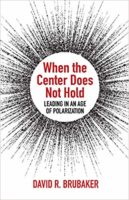No other institution in North American social life combines the personal formation, corporate fellowship, and community development functions that we find in a local congregation. Nowhere else—not our families, our schools, or our workplaces—do we have the potential for individual, group, and community transformation that exists in our local congregations.
Yet despite this enormous capacity for transformation, congregations persistently experience significant internal conflict. My own dissertation research found that in a five year period 45% of congregations experience a conflict “significant enough to convene a special meeting or call in outside help.” After more than 25 years of consulting with local congregations (and more than 50 years of participating in congregational life), I’ve observed five principles about congregational conflict.
1. People don’t fight over things they don’t care about.
This principle may seem blatantly false when we see two individuals or groups arguing over the color of the carpet in the new fellowship hall, but even what present as “minor issues” are almost always artifacts for more important beliefs and values that people care deeply about. When we listen long enough (and ask the right questions) we will usually uncover the deeper meanings for those invested in the fight.
John’s unwillingness to negotiate the color of the carpet, for example, may stem from his conviction that his voice was not taken seriously in earlier deliberations about building the fellowship hall in the first place. Now that the building is a done deal John can at least try to overcome his previous feelings of powerlessness. What John cares about, in other words, is being taken seriously.
2. The identified issue is almost never the real issue.
As the example in the previous principle illustrates, what people say they are upset about is seldom the real issue. I have seen this in virtually every congregational conflict where I have intervened, along with a persistent resistance to viewing the conflict as anything other than the identified issue. The most common identified issues, in my experience, are “pastoral performance,” “moral issues,” and “budget battles.” They tend to be proxies for underlying power struggles among lay members, differing worldviews, and divergent visions for the future of the congregation. When a congregational members can honestly name and negotiate power distribution, worldview differences, and shared vision they will make far more progress than engaging in endless debates over the pastor’s sermons and same sex marriage.
3. As goes the leadership, so goes the congregation.
Of the 30 congregational conflict cases I’ve worked with since 1987, three (10%) were what Speed Leas refers to as “Level V” conflicts, conflict that proved intractable and resulted in a genuine schism. In all three of these high intensity conflicts a split among the leadership of the congregation preceded a split among the members. By “leadership” I refer to the group of lay and ordained leaders, both formal and informal, who together set the tone of the congregation. When that leadership group is able to maintain a shared vision for the congregation and sustain respect for each other I have NEVER seen a conflict destroy or even significantly damage a congregation. As goes the leadership, so goes the congregation.
4. Effective leaders move towards conflict, not away from it.
One of the most effective lead pastors I’ve been privileged to work with has served in that role for nearly 20 years in a multi-staff congregation with more than 300 diverse members (of which I happen to be one). He respects the lay and staff leaders with whom he works and listens to their input and counsel. But while serving on Church Council for four years I also noted that this pastor would instinctively move towards potential conflict and problems rather than away from them. Thus, issues tended to be resolved when they were small and did not escalate to become damaging conflicts.
5. Individuals and congregations tend to live into the stories they tell themselves.
This principle particularly applies to a congregation’s conflict culture—its attitude towards conflict. As my mentor Ron Kraybill (founder of Mennonite Conciliation Service) often said, “If we expect conflict to be destructive, awful and painful, it probably will be.” Thus, the stories we tell ourselves about conflict and its outcome determines to a large degree how we will respond to that conflict and what will result. If we expect that conflict is normal, natural, and manageable, it usually will be. But if we expect that conflict will divide us and destroy our congregation, it probably will.
If these five principles are true, then the implications are significant. While mediation, training and consulting may all be useful services, the most important variable in healthy congregational conflict management is the behavior of leadership—both lay and ordained. If leaders can acknowledge that people fight about things that are important to them, help them to identify their underlying concerns, maintain leadership unity despite differing perspectives, and move towards conflict rather than away from it the congregations they lead are far more likely to thrive in the face of conflict.
Most importantly, leaders need to pay attention to the stories that they tell (and that congregational members share) about conflict and its impact on the congregation. If the stories that we tell ourselves about past conflicts all have horrible endings, that reality will shape our response to current and future conflicts. We will become conflict avoidant and fearful–a toxic mix that encourages anxiety to flourish and conflict to become destructive. Leaders in such systems will need to re-narrate these stories, shaping a congregational narrative of resilience and recovery (not just disaster and decline). If we want our congregational future to have a different ending, we need to change the endings of the stories we tell ourselves. God helping us, we have the power to do so.
David Brubaker has consulted with organizations and congregations in the U.S. and a dozen other countries on organizational development and conflict transformation. He is the author of Promise and Peril, on managing change and conflict in congregations, and When the Center Does Not Hold, on leading in an age of polarization. David serves as Dean of the School of Social Sciences and Professions at Eastern Mennonite University and is a professor of organizational studies.


